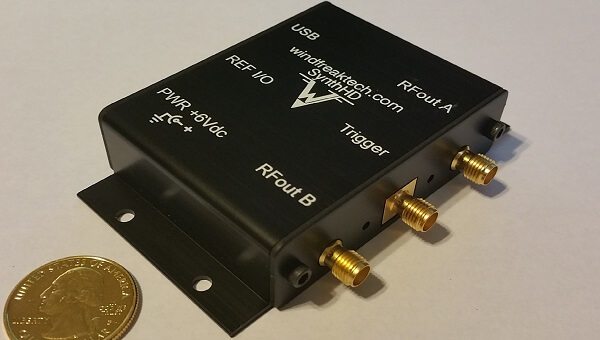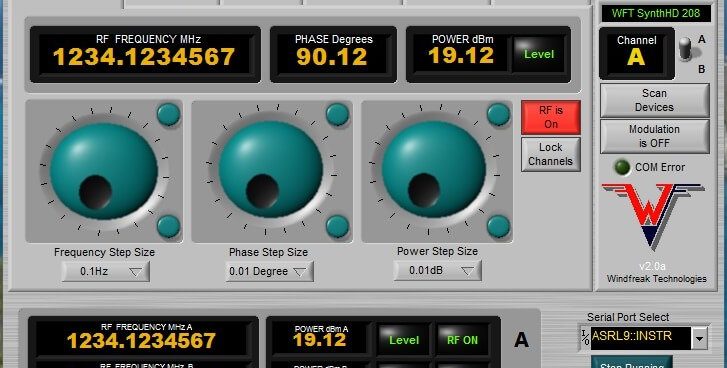Multi-channel signal outputs satisfy diversified signal requirements
The new MFG-2000 Series Multi-channel Function Generators from GWInstek includes both the MFG-21XX entry-level models and the MFG-22XX advanced models with up to five functional channels. Channels 1 and 2 provide high-performance arbitrary function generators up to 60MHz; Channel 3 - the RF signal generator channel, with output up to 320MHz, is a full function signal source; identical to CH1/CH2, it can output sine, square, ramp, pulse, noise, etc. as well as various RF modulation schemes such as AM/FM/PM/FSK/PWM, Sweep, Burst, Trigger. Also included in each model is a 25MHz pulse generator channel with adjustable pulse width, duty cycle, rising and falling edge time. Some models also feature a low-distortion 100kHz Power Amplifier channel - ideal for audio signals. A 150MHz Frequency Counter channel is available on some models too. All five different functionality channels operate separately and have grounds that are isolated from the instrument chassis, making these instruments ideal for floating circuit tests. A built-in DC bias voltage can also be applied to the various waveforms. The front panel, with its clear 4.3” TFT color display, allows arbitrary waveforms to be selected, edited, stored, recalled, output, and triggered from a choice of 66 built-in waveforms.
The AFG channel of the MFG-2000 series outputs sine, square, and triangle, etc. True point-by-point output 14-bit arbitrary waveforms are created with a 200MHz sample rate, 100MHz waveform repetition rate, and 16kpts memory depth. The synchronized MFG-2200 dual-channel models provide correlated functions, including synchronization, delay, sum, and coupling.
The MFG-2000 series function generator can be used with the supplied Arbitrary Waveform Editing Software to allow users to easily and quickly edit arbitrary waveforms. Its Direct Waveform Reconstruction feature allows users to retrieve waveforms from the GDS series of GWInstek digital oscilloscopes and upload them to the arbitrary generator to achieve faithful captured waveform reproduction. With the multi-functionality channels, the MFG-2000 series provides special dual channel waveforms for specific industrial needs, such as IQ modulation signals, low-frequency vibration simulation, automotive sensors, AM/FM broadcast signals, PWM motor or fan control signals, pulse synchronized signals, pulse noise, audio signal simulation, etc.
The MFG-2000 series supports various frequency and amplitude sweeps such as linear/logarithmic, one-way (saw tooth)/two-way (triangle), and others for carrying out frequency response tests on circuits and components. The tracking function of the MFG-2200 series can produce 180 degree phase offset differential signals with same frequency and amplitude. The phase function allows users to freely set phase parameters for both channels on sine wave, cosine wave, and square wave signals. The sum modulation function can combine two signals into one and output this signal via one channel, such as adding a sine waveform and a noise signal to perform speaker distortion tests.
The MFG-2000 series of function generators are ideal for a wide range of applications, including scientific research, education, R&D, production, and quality control, etc. Made by the Taiwanese test and measurement specialists GWInstek, MFG-2000 generators are
available here from Saelig Company Inc.


